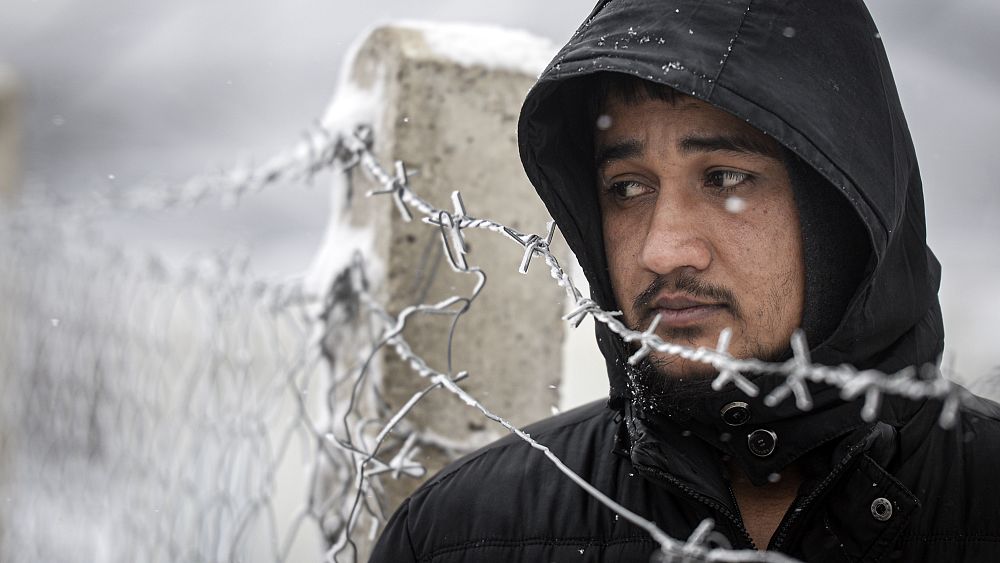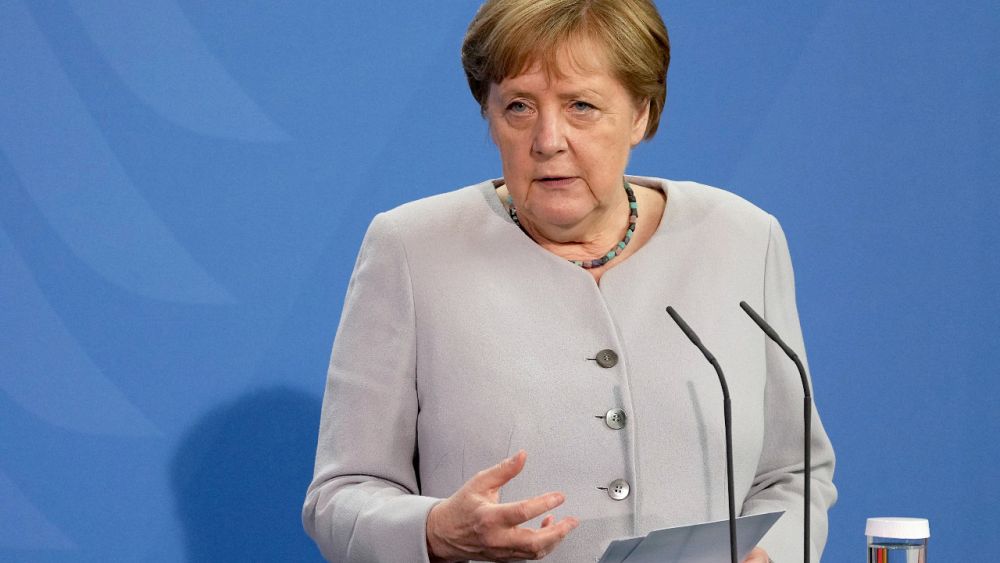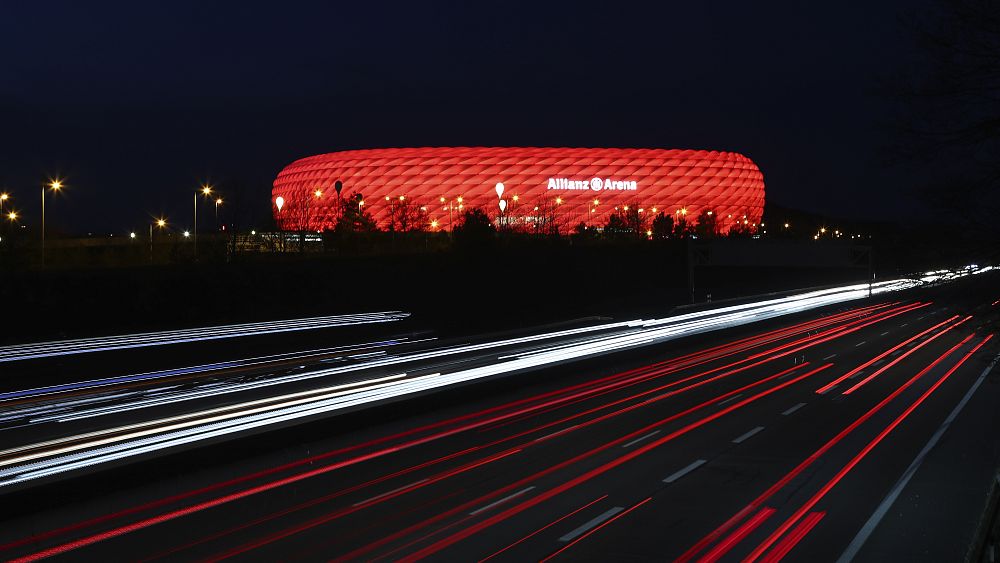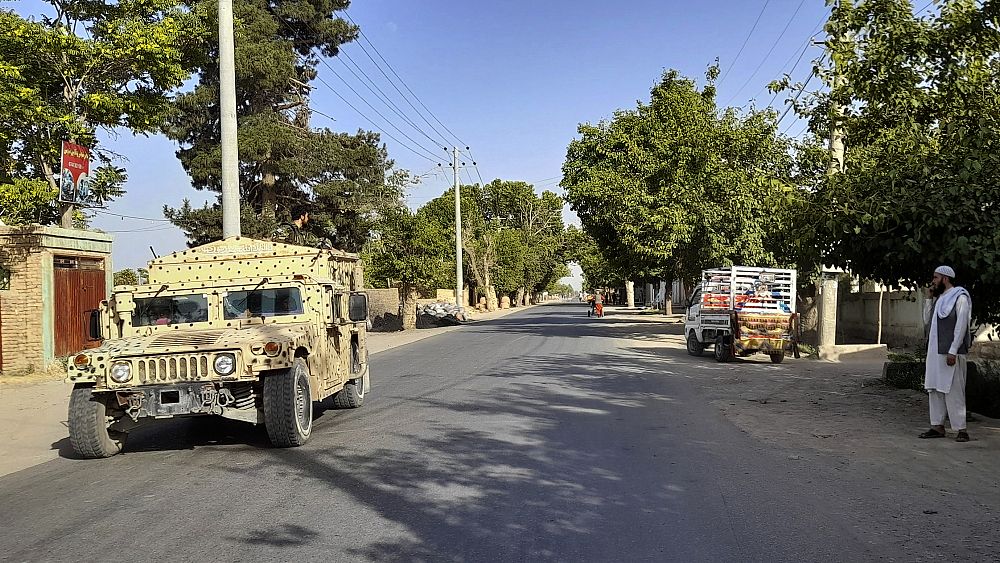On the face of it, the pictures before Christmas of people freezing in snow-covered makeshift tents near the Bosnia-Croatia border was, for many, just another all-too-familiar tale of woe for EU-bound migrants.
But, delve a little deeper, and what emerges is a far more complex story.
It’s a tale that highlights the dysfunctional nature of postwar Bosnia and Herzegovina and is an insight into how much both the European Union and local authorities want to keep migrants off their respective doorsteps.
Bosnia has emerged as a staging post for EU-bound migrants in the last couple of years. Around 70,000 are estimated to have arrived in the country since January 2018, with only a small fraction claiming asylum.
The majority try and make it into the EU via Croatia, to the north.
But border closures as a result of COVID-19 and reports of illegal pushbacks mean many end up marooned in northern Bosnia.
There are around 3,000 migrants in camps or shelters in the north-west region of Una Sana, which is where problems have arisen.
In the run-up to Christmas focus intensified on the Lipa camp, home to fewer than 1,000 of the migrants. It was opened last April but the EU and local authorities disagreed over its lifespan. Brussels saw it as a temporary, out-of-town solution amid the COVID-19 pandemic. Locals, keen to get the migrants away from their town centres, saw it is a permanent fix.
But with a harsh Balkan winter approaching, Lipa had not been connected for either drinking water or mains electricity.
It prompted the International Organization for Migration (IOM) to pull out of running the facility in protest on December 23, blaming local authorities.
With nowhere to go, migrants were left to light fires for days to protect themselves from the cold. Others lived in improvised shelters in the forest, or in abandoned houses.
When asked who was responsible for the migrants’ predicament, the EU’s ambassador in the country, Johann Sattler, said it was “an artificial, humanitarian crisis”.
So, if it’s a man-made problem, what are the problems that caused it?
Sarajevo versus Bihać, national against local
For years, local authorities in Bihać, Una Sana, fought Sarajevo in their bid to keep migrant shelters in the countryside and out of town centres.
Bihać preferred the rural camp at Lipa, while national authorities had recently pushed for the reopening of a former migrant centre in the town centre.
Known as Bira, it was a former fridge factory that went bankrupt in 2015. It was converted into a migrant shelter in 2018 and cost the EU €25,000 a month in rent, according to IOM.
It was closed in September last year amid public health concerns, by which time migrants had already begun living at the IOM-run Lipa site.
Locals have opposed Sarajevo and Brussels’ preference to reopen Bira, regularly protesting outside its gates.
“We have nothing against these people, we just want our peace back,” said Adnan Habibija, a former member of the city council in Bihać, during a demonstration.
“For three years, we have shown humanity and will continue to do so, it’s ok to help them have a roof over their heads and food. But it is not ok not to leave them free to roam about without documents at all times, break into the homes of our people, steal, damage or assault citizens in the streets.”
The region’s ministry of the interior claimed that after the closure of Bira, the crime rate went down.
Bosnia versus the EU
While the locals were saying enough is enough, Sarajevo was being pressurised by Brussels to make this problem go away, according to Refik Hodzic, a journalist and analyst.
The EU has provided Bosnia – who applied to join the bloc in 2016 – with €89 million to manage the situation, European Commission spokeswoman Ana Pisonero told Euronews.
Almost all this money does not go directly to Bosnian institutions. Instead, it is channelled through the IOM, which has received nearly €77 million since June 2018.
A large chunk of this money is meant to be used to prepare the country for EU membership, going towards things like institution-building and cross border cooperation with other countries of the bloc, but, as Pisonero says, it’s being used to “address essential needs of refugees and migrants” and covering the cost of various reception centres.
“Unfortunately, Bosnia is completely dependent on the EU for its political and economic stability, looking to the EU as the light at the end of the tunnel,” said Hodzic.
“No politician in Sarajevo would dare say to the EU: ‘Look, you have to deal with this problem by not just equipping a camp with tents, but in a broader way, let’s deal with this together’.”
Among the possible broader solutions to the issue would be for the EU to come in and redistribute migrants with legitimate asylum claims to other countries in the bloc.
But Peter Van der Auweraert, the IOM’s representative in Bosnia, said this would cause more and more migrants to come to the country.
“It would be the only country from where people are being relocated,” he told Euronews. “That becomes a pull factor.”
In the seeming absence of long-term answers, Josep Borrell, the EU’s foreign affairs chief, recently reminded Bosnia of the sums the bloc had already put on the table, including €3.5 million to equip the Bira migrant centre. He made a point that despite the money, the centre had nevertheless “been left unused”.
“The EU has a very arrogant and colonial attitude,” claimed Hodzic. “Borrell says basically: ‘We gave you millions of euros, this problem has to be solved now’. When, in fact, Bosnia is suffering from this because of the attitude of the EU of militarising borders and pushing migrants back. The EU plays on the weak state of Bosnia, ordering them around.”
Some, including those in Brussels, believe that local authorities don’t have the political will to make even the smallest steps, such as providing power to a migrant reception centre.
“We have a centre called Borici, in Bihać, that needed electricity,” said Van der Auweraert. “We paid upfront to the electricity company, but it took a year to get 30 metres of electrical cable. So there is a reluctance on the side of international donors to pump money into something that may not happen or that may take an enormous amount of time.”
Peter Stano, an EU foreign affairs spokesman, warned there would be consequences for Bosnia’s membership ambitions if it failed to meet the demands of Brussels and its international obligations to solve the crisis at Lipa.
Bosnia versus the International Organization for Migration (IOM)
IOM has also come in for criticism.
Frustrated by the failure to make the Lipa migrant camp suitable for winter, it had threatened to pull out of managing it.
On the day the IOM was set to quit, December 23, the camp was set on fire. An arson probe is underway.
“For several reasons, mostly political, it never got connected to the main water or electricity supply, and was never winterised,” wrote IOM on the day of the blaze. “And now, with this fire, it never will be.”
The mayor of Bihać, Šuhret Fazlić, has a different version of events.
He lamented that since June 2020 no one – from either the central government or IOM – had been in touch about Lipa.
“We have spent, together with the Una Sana cantonal government, about €250,000 to prepare the Lipa site,” he said. “The EU and USAID spent more than a million additional euros. It makes no sense the IOM closed Lipa down.”
Hodzic said IOM’s attitude was “completely mind-boggling”.
“IOM abandoned the camp because of the gamble they want to make with Bihać and pressure them to use the facility in the city centre [Bira],” he said. “How do you abandon people in the middle of the winter?
“I find offensive the notion that we abandoned people there. Of course, we had a plan B,” said Van der Auweraert. “We increased our humanitarian assistance for people sleeping outside, in temperatures that go up to -25°C. We have been warning and begging authorities for months, but ultimately we can only implement what authorities decide.”
Bosnian cantons against each other
The 1992-95 war in Bosnia saw three main ethnic factions fight for control after the break-up of Yugoslavia.
In the deal that brought an end to the hostilities, Bosnia’s ethnic factions – Muslim Bosniaks, Catholic Croats and Orthodox Christian Serbs – agreed to divide up the country.
While the peace has held, the legacy has been a dysfunctional political system that reflects the persisting ethnic divisions.
Instead of having one president, for example, the office is shared by a candidate from each ethnic faction.
In terms of the migrant situation, Croats and Serbs refuse to host migrants on territories where they are the ethnic majority.
Hosting the migrants has therefore fallen on the shoulders of the Muslim Bosniaks, who make up a majority of the population in the Una Sana region, which contains Bihać and the nearby Lipa migrant camp.
Each of Bosnia’s 10 cantons has the power of taking its own decisions on migrants, thus impeding any attempt at relocating them elsewhere in the country.
An example of this came shortly after fire gutted most of the Lipa camp, on December 23. There was an attempt to transfer the migrants by bus to the town of Bradina, 320 km away. But the local authorities there refused, leaving the migrants waiting on buses for more than 24 hours.
Nationalist politician Milorad Dodik – one of the current presidents of Bosnia and Herzegovina, together with Bosnian Croat, Željko Komšić, and Bosniak Šefik Džaferović – vowed several times to never have migrant reception centres on the territory ruled by Bosnian Serbs, the Republika Srpska.
“With its current constitution structure, Bosnia has no capacity of dealing with crises like this, that require the centralisation of decision making,” said Hodzic. “Serb and Croat politicians can impose blockades, and have been framing this as a Muslim invasion, a language used in other parts of Europe.”
Since at least 2018, where the influx of migrants began to grow, “the town of Bihać has been left to deal with it with its own resources”, he added.
‘We want to go to Germany’
After failed attempts to move them elsewhere, 980 migrants are still at Lipa. But conditions have improved in recent weeks with the installation of heated tents by the army.
There is now electricity on the site but the temporary water pipes installed still freeze at night.
As IOM stresses, the migrants are in transit and do not want to stay in Bosnia. In 2019, less than 3% of them chose or managed to register as asylum seekers.
Registrations of claims have also been suspended due to COVID-19. Even if they were still being taken, there are serious obstacles to accessing asylum, according to the European Commission, because of capacity issues.
As a result, while the EU asks Bosnia to step up its efforts regarding the migrants, legally the country would not have obligations towards the majority of them, beyond those expressed in international treaties and conventions that ensure the respect of human rights and dignity.
Camps such as Lipa “are not there to resolve the situation of irregular migration, they’re there to make sure that the migrants are treated humanely and to make sure that the pressure on the local population is as little as possible”, said Van der Auweraert.
Most migrants in the region are simply waiting for another chance to try and cross the border into Croatia.
On a freezing January morning, Euronews meets a young mother pushing her baby along the road that leads to the EU frontier. It had just begun to snow.
The woman, with her husband and eldest son, says the day before they were pushed back from the border by police and had to walk 15km back to their shelter.
“They [initially] took us to the IOM camps in town, yes, but we do not want to stay in camps. We want to go to Germany.”
Every weekday at 1900 CET, Uncovering Europe brings you a European story that goes beyond the headlines. Download the Euronews app to get an alert for this and other breaking news. It’s available on Apple and Android devices.






